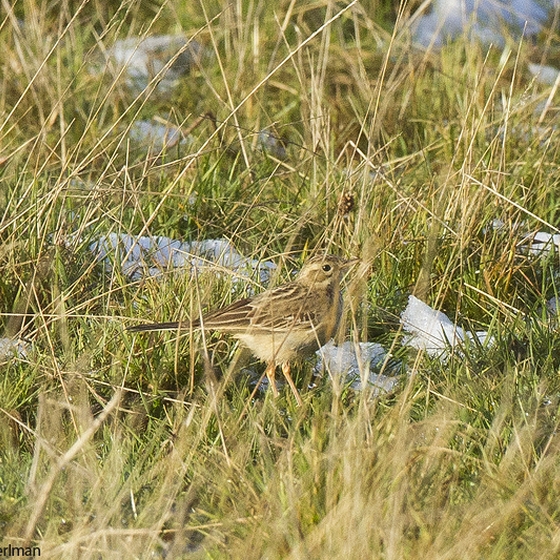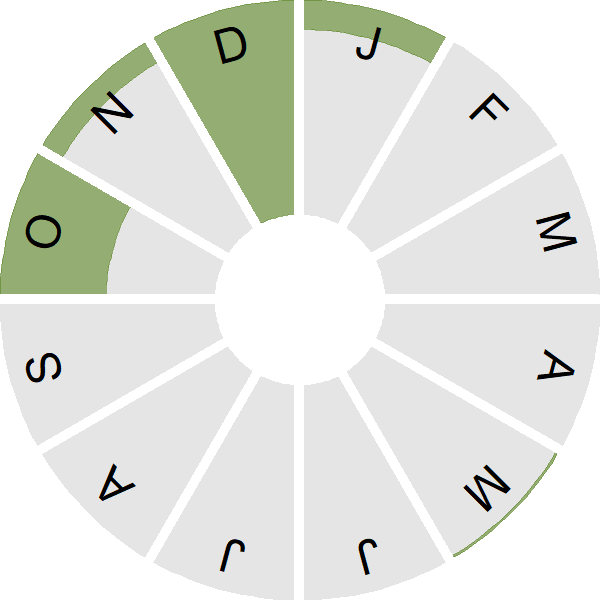Blyth's Pipit

Introduction
Difficult to separate from the very similar Richard's Pipit – of which it has previously been considered a subspecies – this large pipit has a rather restricted breeding range, centred on Mongolia.
With just a few tens of records, typically from September to December, Blyth's Pipit remains are very rare visitor to Britain.

Key Stats
Status and Trends
Conservation Status
Population Size
Population Change
Population trends of this scarce species are not routinely monitored.
Distribution
This vagrant is too rarely reported to map distribution.
Distribution Change
This vagrant is too rarely reported to map distribution change.
Seasonality
Blyth's Pipit is a very rare vagrant, recorded occasionally in late autumn and winter.
Weekly pattern of occurrence
The graph shows when the species is present in the UK, with taller bars indicating a higher likelihood of encountering the species in appropriate regions and habitats.

Movement
Britain & Ireland movement
Biology
Survival and Longevity
Survival is shown as the proportion of birds surviving from one year to the next and is derived from bird ringing data. It can also be used to estimate how long birds typically live.
Classification, names and codes
Classification and Codes
- Order: Passeriformes
- Family: Motacillidae
- Scientific name: Anthus godlewskii
- Authority: Taczanowski, 1876
- BTO 5-letter code: BLYPI
- Euring code number: 10040
Alternate species names
- Catalan: piula de Godlewski
- Czech: linduška mongolská
- Danish: Mongolsk Piber
- Dutch: Mongoolse Pieper
- Estonian: mongoolia kiur
- Finnish: mongoliankirvinen
- French: Pipit de Godlewski
- German: Steppenpieper
- Hungarian: mongol pityer
- Icelandic: Brumtittlingur
- Italian: Calandro di Blyth
- Latvian: Godlevska cipste
- Lithuanian: Godlevskio kalviukas
- Norwegian: Mongolpiplerke
- Polish: swiergotek stepowy
- Portuguese: petinha-de-blyth
- Slovak: labtuška Godlewského
- Slovenian: mongolska cipa
- Spanish: Bisbita estepario
- Swedish: mongolpiplärka
- Welsh: Corhedydd Blyth

